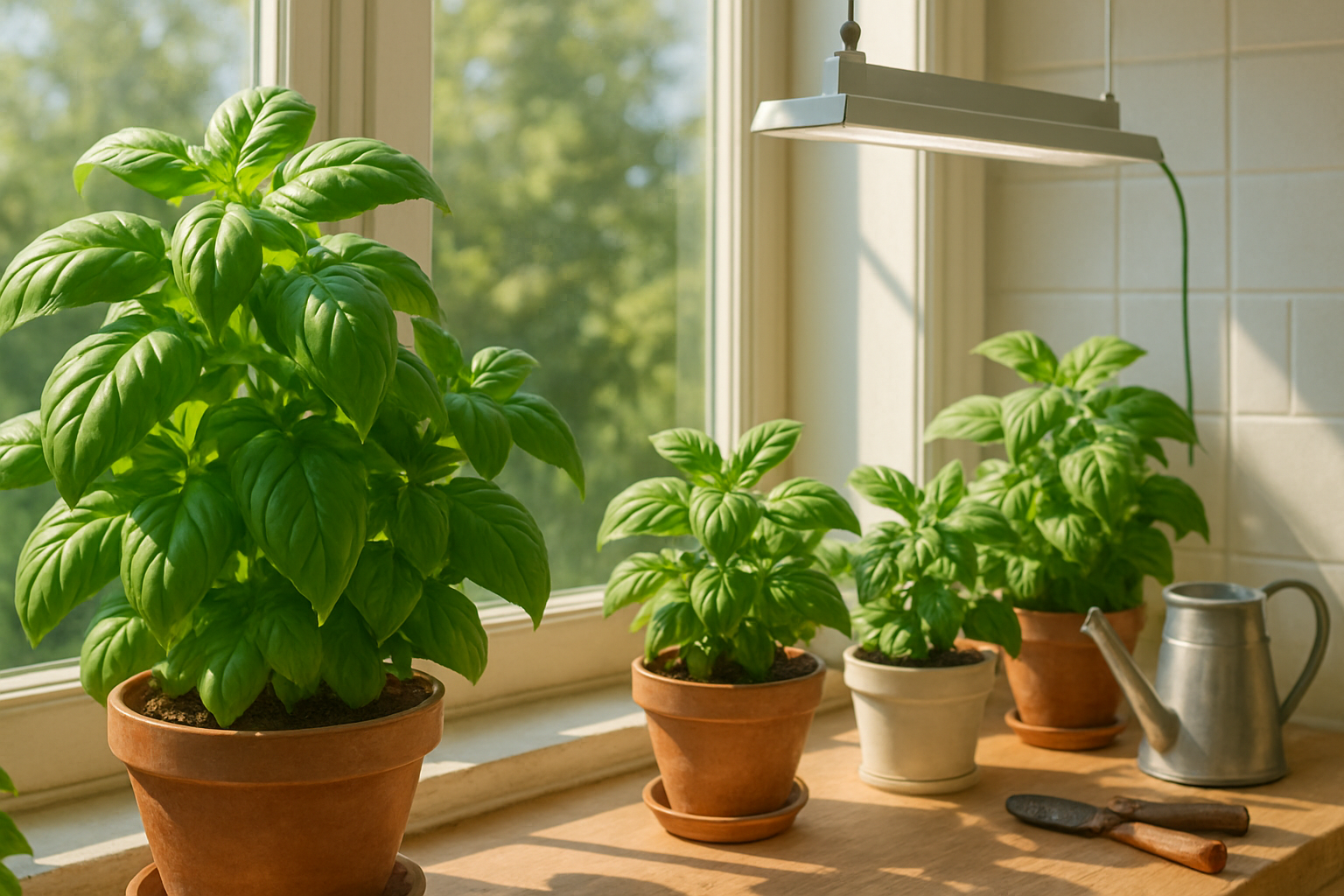Introduction
Indoor gardeners everywhere love basil for its vibrant flavor and versatility, but growing lush, healthy plants depends on having the right basil grow light setup. While basil thrives in sunlight, indoor spaces often don’t provide the consistent, bright light it needs. That’s where the debate begins: should you rely on natural light from a sunny windowsill, or invest in grow lights to give your indoor basil an extra boost?
In this post, we’ll explore the pros and cons of each lighting option so you can decide what’s best for your space, lifestyle, and basil harvest. We’ll cover how to determine if your windows provide enough natural light, what to look for in a basil grow light setup, and tips for helping your basil thrive regardless of your lighting choice. Whether you’re a kitchen herb newbie or a seasoned indoor gardener, you’ll find practical advice to grow delicious basil year-round.
Understanding Basil’s Light Requirements
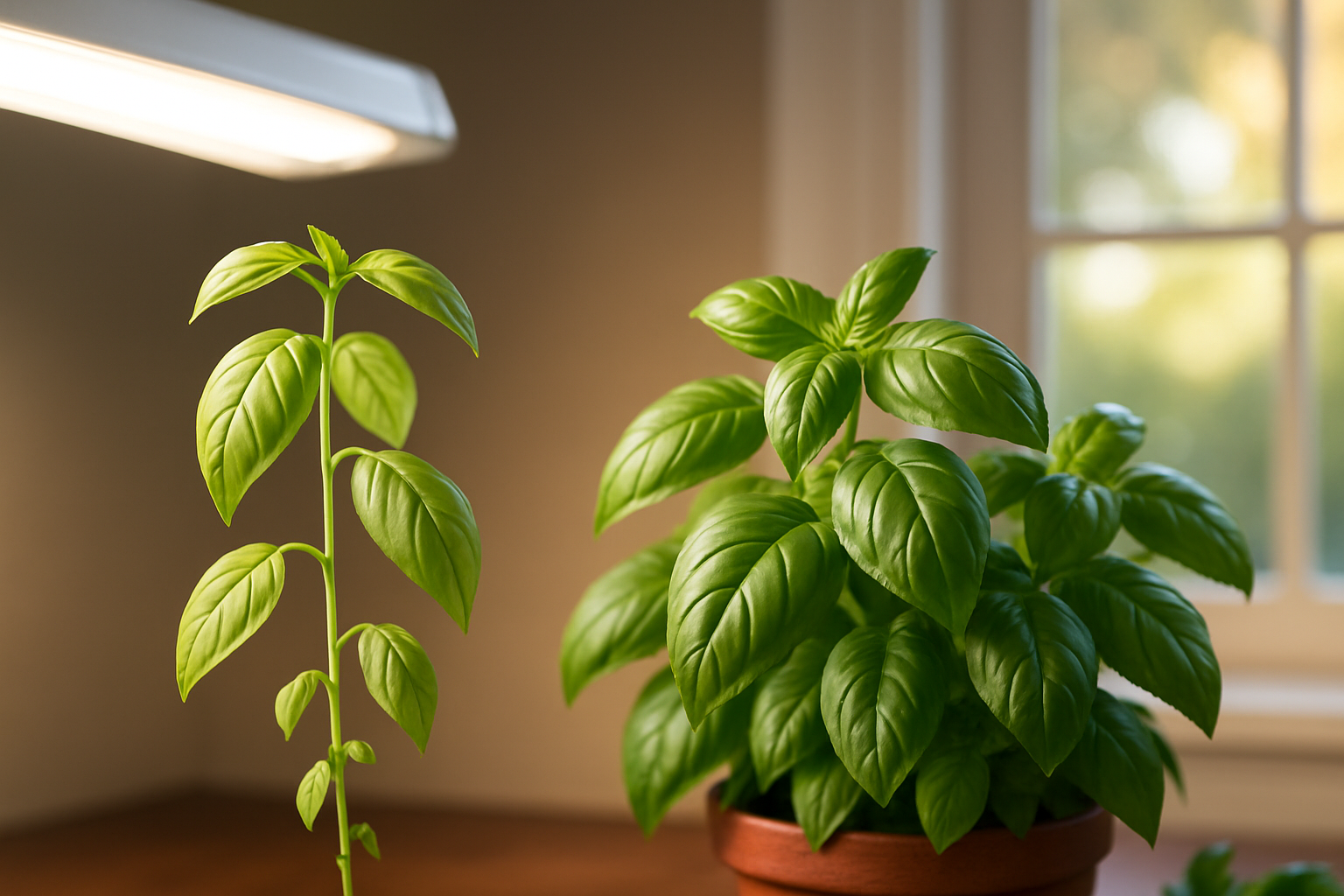
Basil thrives best indoors with plenty of bright, direct sunlight—ideally, 6 to 8 hours a day. Place your basil near a south-facing window for the most consistent light, as these spots get the brightest, longest-lasting sun.
If natural light is limited, supplement with a fluorescent or LED grow light, keeping it about 4–6 inches above your plants to provide strong, even illumination. The light should be full-spectrum, mimicking the sun and helping basil photosynthesize efficiently, resulting in lush, flavorful leaves.
Watch for signs your basil isn’t getting enough light:
- Growing tall and spindly (leggy)
- Producing small leaves
- Turning pale green
If you notice these, your basil needs more sun or artificial light.
On the other hand, too much direct sun—especially close to a window—can cause leaf tips to brown or yellow, and you might spot crispy, sunburned patches. While some basil varieties tolerate shade or heat better, most need consistently bright conditions to thrive.
Rotating your plant every few days helps ensure every side receives equal light, keeping growth balanced and healthy. Always check for environmental extremes and adjust your plant’s position to find that perfect, sunny sweet spot for happy basil.
Harnessing Natural Light Indoors
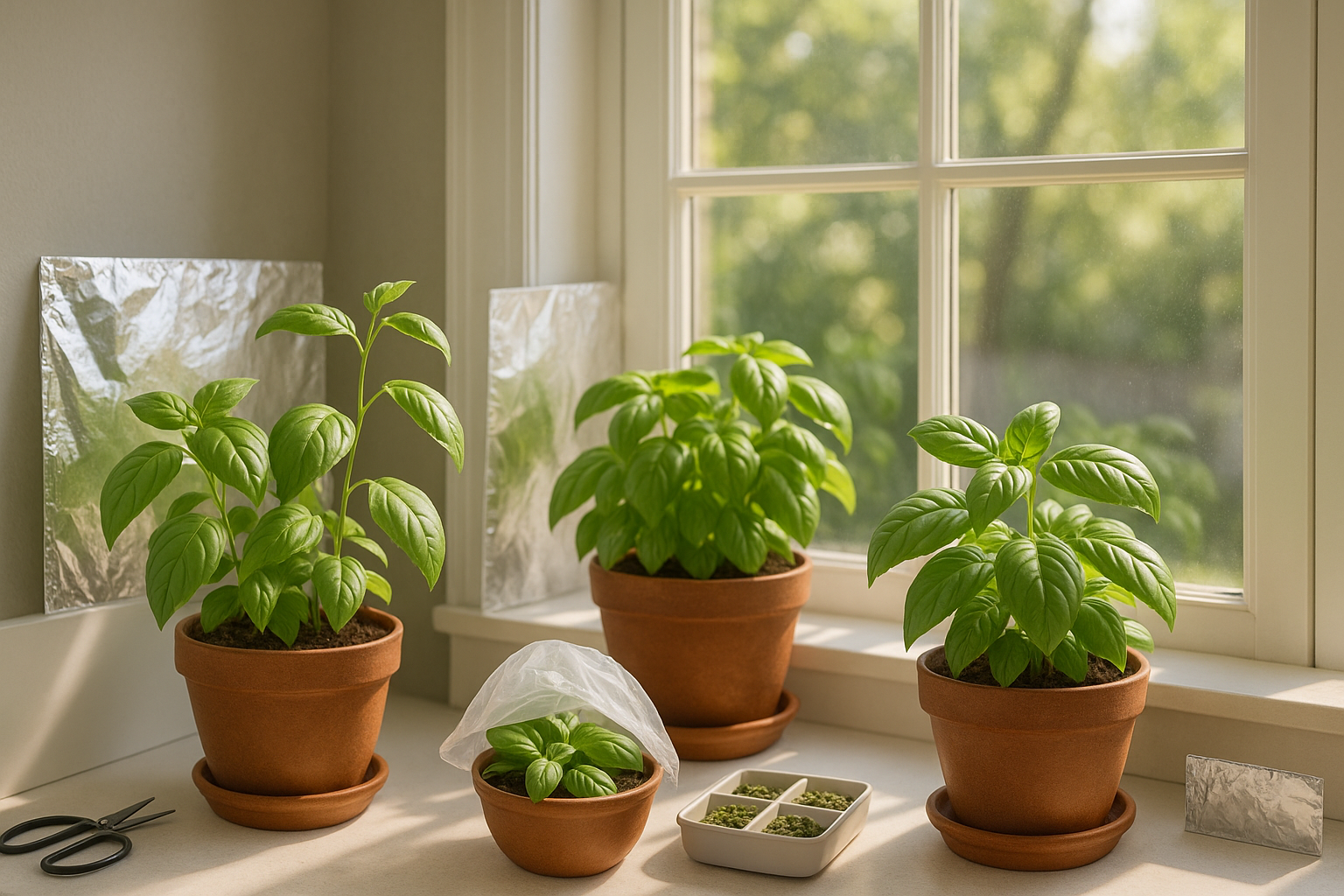
For thriving indoor basil, place your pots near a south-facing window if you’re in the Northern Hemisphere, or a north-facing window in the Southern Hemisphere, since these directions receive the most consistent, direct sunlight. West-facing windows can work too, especially for afternoon sun, but they may offer less daily light in winter.
Keep in mind that the amount of natural light shifts throughout the year—winter brings shorter days and lower sun angles, so your basil may struggle if left in the same spot. Cloudy weather or nearby obstructions like buildings and trees can also reduce sunlight.
To maximize natural light, consider moving your basil pots around as the seasons change or placing them closer to the glass. Using white surfaces or aluminum foil as makeshift reflectors can help bounce extra light onto your plants.
Rotate your basil every few days so all sides get equal exposure and grow evenly. Watch for warning signs like spindly stems, small pale leaves, or slow growth; these clues indicate natural light isn’t enough. If you notice these signs, it’s time to supplement with a grow light to keep your basil healthy and productive year-round.
Grow Lights
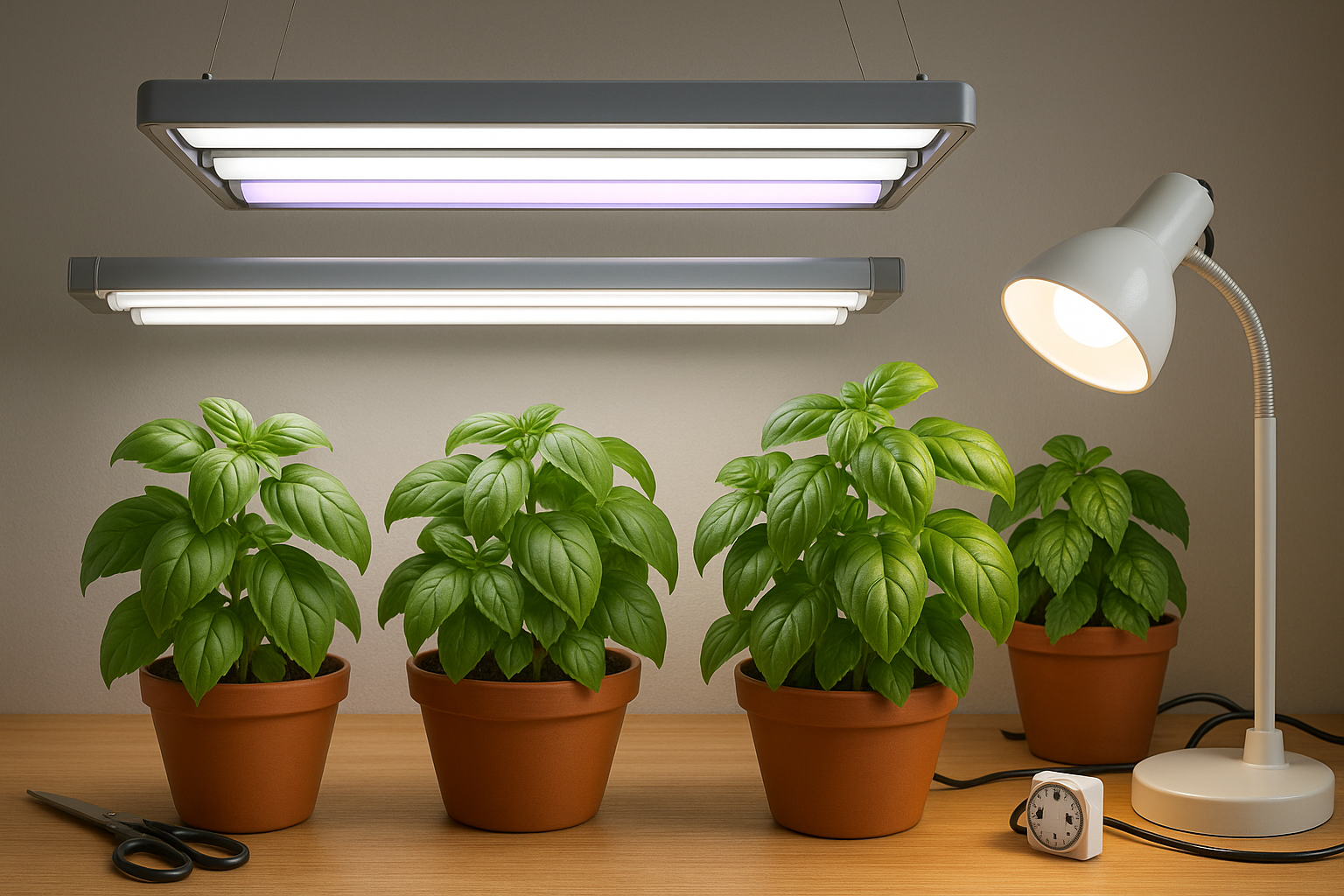
When growing basil indoors, choosing the right grow light is essential for strong, flavorful plants. The most popular options are LED, fluorescent tubes, and compact fluorescent lamps (CFLs).
LEDs are efficient and long-lasting, offering customizable spectrums that mimic natural sunlight while saving on electricity bills—though their upfront cost is typically higher. Fluorescent tubes provide gentle, uniform light and are widely available; they’re a budget-friendly choice but less energy-efficient than LEDs. CFLs are compact and easy to use in table or desk lamps, making them perfect for small spaces, but they don’t last as long as LEDs and may need more frequent replacement.
Regardless of the type, prioritize full-spectrum lights that offer both cool (blue) and warm (red) wavelengths, which are crucial for robust basil growth. Position lights 6–12 inches above the plants: too close risks leaf burn, while too far results in leggy stems. Aim for 12–16 hours of light daily, using a simple plug-in timer for convenience and consistency.
Always follow manufacturer mounting instructions—secure fixtures firmly and keep cords away from water or high-humidity areas for safety. Energy use varies: LEDs draw 10–20 watts per fixture, while fluorescents and CFLs consume more, which can add up over months. Consider both upfront and ongoing electricity costs; a slightly pricier LED may save more in the long run.
For best results, monitor plant health and adjust light height and timing as needed—your basil will thrive with a tailored, energy-smart setup.
Natural Light vs Grow Lights
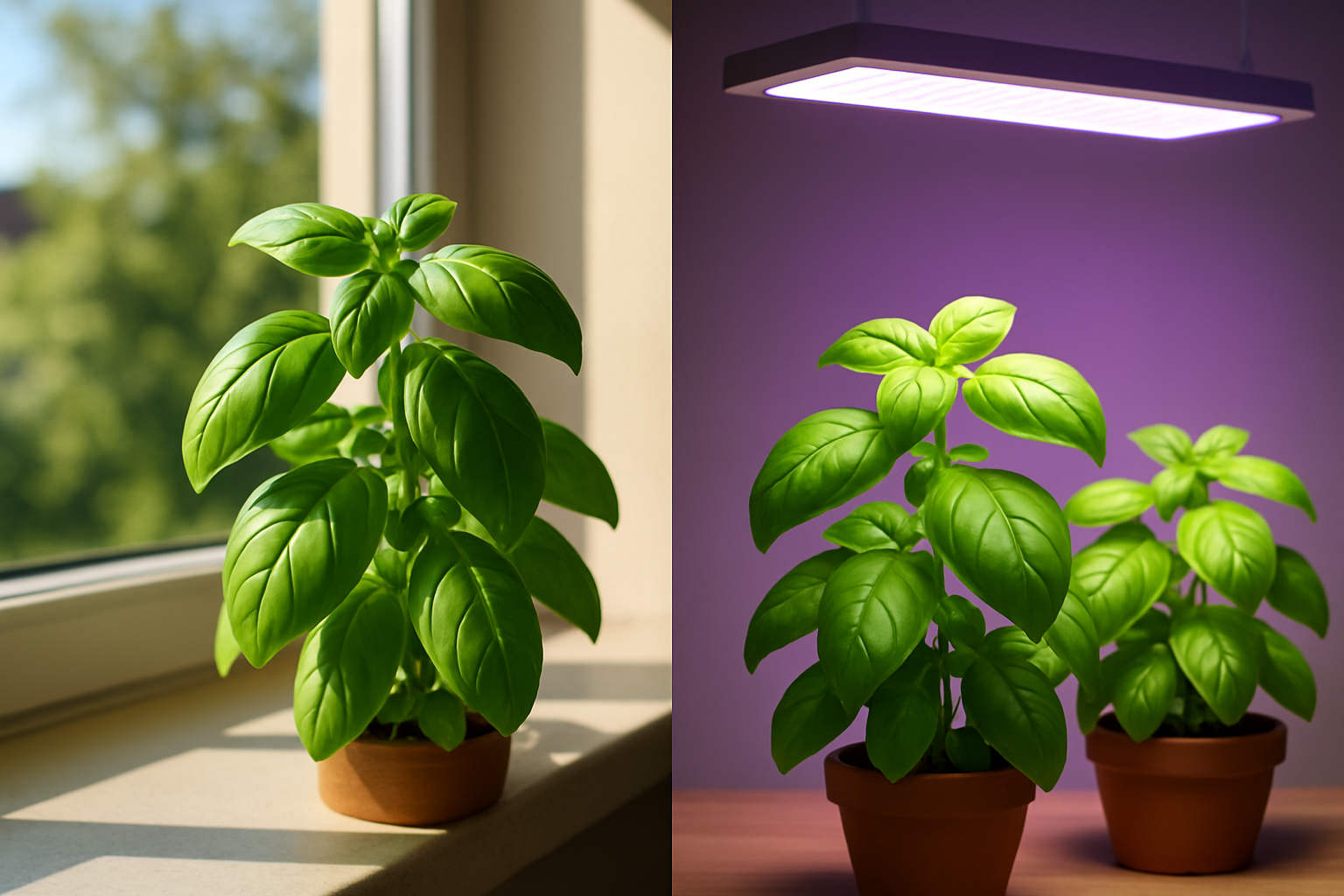
When growing basil, the choice between natural light and grow lights often depends on your space and climate. Natural sunlight offers a free, full-spectrum boost that keeps basil robust, especially in brightly lit kitchens or sunny windowsills. Plants tend to grow stockier and develop richer flavors thanks to the sun’s intensity and daily cycle.
However, relying solely on the sun has its downsides: not every home has south-facing windows, and seasonal shifts can limit light, leaving basil leggy or stunted in winter. That’s where grow lights come in—they provide consistent, customizable light year-round, regardless of weather or window space.
If you live in a basement apartment or somewhere with short winter days, LED grow lights help basil thrive by letting you control day length and intensity, often resulting in bushier, more predictable growth. While there’s an upfront cost for lights and a bump in your electricity bill, LEDs are energy efficient and long-lasting.
Some worry grow lights make basil less flavorful or “unnatural,” but studies show that quality LEDs actually mimic sunlight well, and basil grown under them can be just as healthy and aromatic.
Bottom line: use natural sunlight if you’ve got it, but don’t hesitate to supplement or use grow lights in less ideal spaces—your basil will thank you either way.
Extra Tips for Thriving Indoor Basil
To keep your indoor basil thriving, pay close attention to watering—basil loves moist but not soggy soil, so water when the top inch dries out. Choose a well-draining potting mix and a pot with drainage holes to avoid root rot.
Regularly pinch off the upper leaves to encourage bushy growth and prevent the plant from flowering too soon. Feed your basil every 4-6 weeks with a half-strength liquid fertilizer to boost its vigor.
Keep basil in a spot where temperatures stay above 65°F and humidity is moderate—avoid chilly drafts.
Light is crucial: basil needs 6-8 hours of bright, direct sunlight daily. Too little light causes slow growth, pale leaves, and leggy stems. If you notice these signs, move your plant closer to a sunny window or supplement with LED grow lights.
Rotating the pot weekly ensures even growth and prevents basil from leaning toward the light source.
Conclusion & Next Steps
Choosing between natural light and grow lights for indoor basil depends on your space, schedule, and goals. Natural sunlight is cost-effective and perfect if you have a sunny windowsill, while grow lights offer more control throughout the year. The best approach is to try both—track your basil’s growth, leaf size, and flavor under each condition.
Every home is different, so observation is key. If you’re curious, explore how other herbs like mint or cilantro thrive indoors, or dive into DIY grow light setups for larger indoor gardens. Experiment, take notes, and enjoy watching your herbs flourish!
